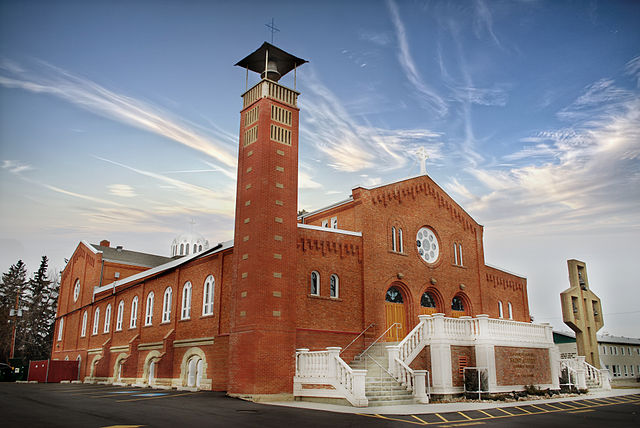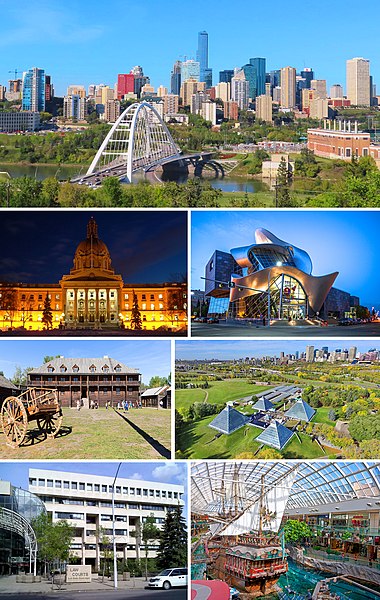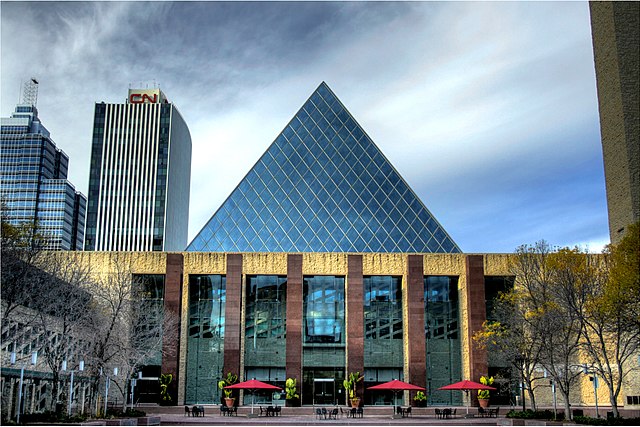St. Albert is a city in Alberta on the Sturgeon River northwest of the City of Edmonton. It was originally settled as a Métis community, and is now the second-largest city in the Edmonton Metropolitan Region. St. Albert first received its town status in 1904 and was reached by the Canadian Northern Railway in 1906.
Originally separated from Edmonton by several miles of farmland, the 1980s expansion of Edmonton's city limits placed St. Albert immediately adjacent to the larger city on St. Albert's south and east sides.
View of Downtown St. Albert
St. Albert Parish atop what is now St. Albert's Mission Hill
The St. Albert Place complex
Historic Alberta Wheat Pool and an Alberta Grain Co. Elevator by the rail line in St. Albert, Alberta. Both saved from demolition and are now Provincial Historic Sites of Alberta. Now known as the St. Albert Grain Elevator Park
Edmonton is the capital city of the Canadian province of Alberta. Edmonton is situated on the North Saskatchewan River and is the centre of the Edmonton Metropolitan Region, which is surrounded by Alberta's central region. The city anchors the northern end of what Statistics Canada defines as the "Calgary–Edmonton Corridor", a region spanning between Edmonton and the city of Calgary, Alberta’s largest city, which includes the many smaller municipalities between the two.
From top, left to right: Walterdale Bridge and Downtown Edmonton skyline, Legislature Building, Art Gallery of Alberta, Fort Edmonton Park, Muttart Conservatory, Law Courts Building, West Edmonton Mall
The last of five Fort Edmontons was constructed in 1830. It was the third to be built within present-day Edmonton.
The completed Alberta Legislature Building in 1914, just above the last Fort Edmonton. The city was selected as Alberta's capital in 1905.
Edmonton City Hall is the home of the municipal government for Edmonton.








